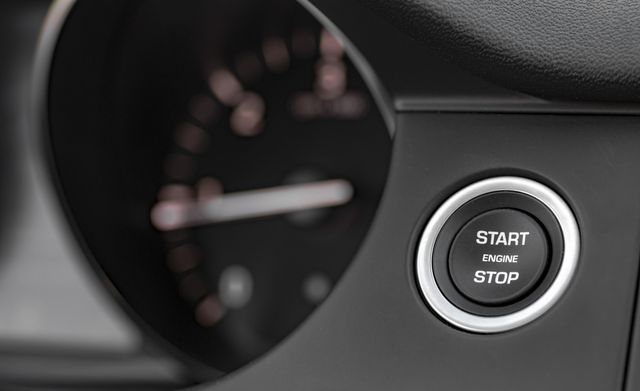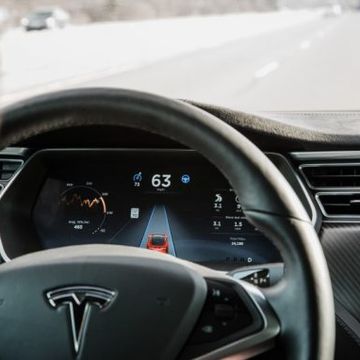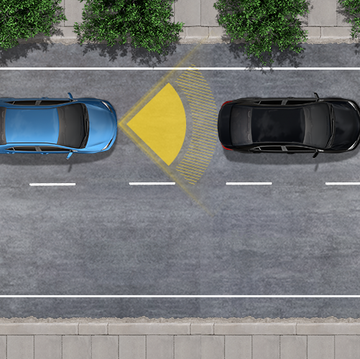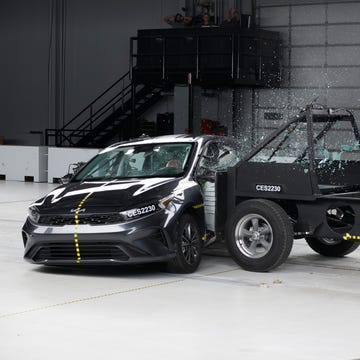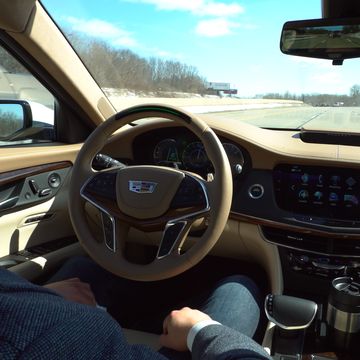- A New York Times report tells the story of a couple who died of carbon-monoxide poisoning after their 2017 Toyota Avalon, equipped with a push-button keyless ignition, was mistakenly left running inside their garage.
- The story outlines the problem of modern keyless-ignition systems that make it more difficult to be certain whether a car's engine is running.
- NHTSA and SAE International have both recommended that warning systems be added to push-button ignition systems, but more driver attentiveness is a powerful remedy, too.
Are all the electronics in your car a good thing? When it comes to safety features such as anti-lock brakes and stability-control systems, the answer is yes. Convenience features like touchscreens, however, can add distraction and, at worst, can be dangerous. It's difficult to know where to draw the line, but the New York Times suggests in a recent story that keyless-ignition systems pose an overlooked risk because sometimes, the driver fails to switch the car off or doesn't realize it's still running. It's a follow-up to a larger investigation citing the dangers that can happen when you don't have to physically turn off a key to be sure your car is shut down.
The latest Times piece cites the unexpected death of Sherry Penney and James Livingston, a married couple who passed away from carbon-monoxide poisoning after accidentally leaving their 2017 Toyota Avalon running inside a closed garage. In addition to keyless ignition, the Avalon features a stop/start function in which the engine will turn off while the ignition is still on to save fuel. Carbon-monoxide poisoning is rare, with only a few hundred cases reported every year, but running an internal-combustion engine in an enclosed space can create deadly concentrations in a matter of minutes—even faster with a cold engine. With an attached garage, a running car can make even the air inside a home fatal. The Times estimated that, since 2006, 36 people have died in incidents similar to this one in the United States and "dozens of others" have been injured.
Keyless ignition is popular and rapidly becoming a standard feature because it's convenient. The driver can leave the key fob in a pocket or purse, never worrying about locking the keys in the car. Because it communicates wirelessly with the car's computer, a keyless system is more secure than an old-fashioned key where the number of combinations are a physical constraint. And with fewer moving parts than an ignition tumbler, keyless ignition can be less expensive for the automaker to produce.
General Motors adopted push-button ignition across all its cars after its major ignition switch recall. With no key to turn, there's far less danger of shutting off a car while in motion, whether accidentally or due to a faulty part (the latter being the major factor for GM).
In GM's case, keyless ignition was a safety enhancement. But with all technology, there are unexpected consequences. In this case, keyless ignition combined with automatic stop/start increases the risk of drivers leaving their cars on accidentally. When that happens inside a garage, the results can turn serious.
The issue here is how to avoid that, and, as with any tragedy, it's complicated. The Times says that half of the carbon monoxide injuries and fatalities it identified were Toyota and Lexus models, even though Toyota uses an audible beeping warning. The Toyota Avalon does not feature the kind of automatic-shutoff function that other automakers employ, which happens after either a set time limit or through some combination of unbuckling the seatbelt, opening the driver's door, and exiting the vehicle with the key. Toyota has said it will add an automatic shutoff feature on its 2020 models with keyless ignition.
Both SAE International and the National Highway Traffic Safety Administration (NHTSA) have proposed standards that would require more warnings or an automatic shutoff with keyless ignitions, but the auto industry, as always, is known to resist attempts at regulation that adds any cost or complexity.
Car and Driver, true to our name, would like to respectfully suggest that the Times is missing an important factor: the people who drive, park, and own the vehicles in question. It is not drivers' fault that it's harder to tell whether or not their car is on or off these days. Even so, it is their responsibility to learn how to tell what "on" and "off" are like on the cars they own and drive.
The evolving technology requires a mental shift: now that you don't mechanically stick a key in the ignition and hear engine noise when the car is running, you need to pay closer attention to whether you've shut off the vehicle. It's clear we can't trust automakers to protect us from every scenario, any more than we can trust the internet to protect our personal data. As cars become more appliancelike and consumers become less and less engaged with how cars work, the risk of problems like this only becomes more likely. It's a reminder that the most important safety feature in a car, as always, is you.
Mike Austin is a veteran automotive journalist current working as a Senior Research Analyst with Guidehouse Insights covering EVs, charging, and mobility. He got his start by applying to a Gopher position at Automobile Magazine instead of taking notes in chemistry class, and despite obtaining two engineering degrees from the University of Michigan, Mike pursued a career in automotive journalism.
He moved to the analyst world in 2022 after working at publications such as Car and Driver, Popular Mechanics, and Autoblog for more than 20 years, but his ineffable curiosity continues to lead to freelance writing. Mike lives in Ypsilanti, Michigan and should probably be in the garage fixing something.
